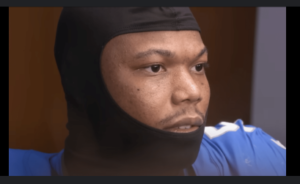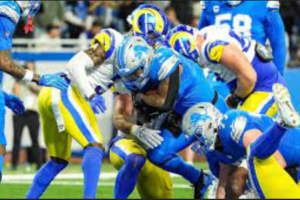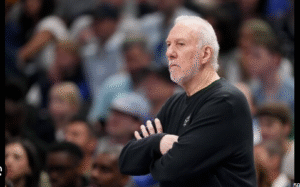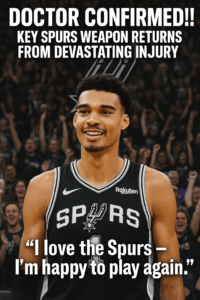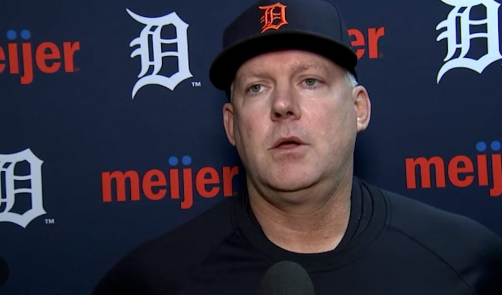
The pitching staff of the Detroit Tigers has the best record in the American League since the All-Star break, going 28-21. In baseball, they also own the top ERA. Of certainly, there is a close connection between those two facts. With 16 games remaining until facing the Colorado Rockies on Thursday, the Tigers are at 75-71 overall. They will need to surpass the Minnesota Twins with a closing record of at least 12-4. Though the job at hand is formidable, the Tigers’ second half run is sending excellent long-term signals to the fanbase. It’s a long shot.
The Tigers’ ability to accomplish this with just one legitimate big league starting pitcher on the roster is really amazing, though.
Granted, Tarik Skubal, the probable AL Cy Young winner, is the starter who has served as the project’s rock. Apart from a few strong starts from Jack Flaherty prior to his trade to the Dodgers, and a couple of merely mediocre Casey Mize appearances, manager A.J. Hinch, pitching coach Chris Fetter, and his staff have managed to pull off some minor miracles over the past two months using a combination of mediocre relievers and rookie starters who aren’t quite ready for full-time duty.
Other than Skubal, the only other reliable starter who has been a regular is rookie Keider Montero. The right-hander, 24, is a work in progress with an ERA of 4.88 and a 4.85 FIP, but he has excellent stuff and seems to be developing. Even though his play has fluctuated somewhat from start to finish, he has at least provided the Tigers with a steady presence and a few strong performances. That’s about what you can anticipate from a young rookie who has good skill but is still developing as a leader.
I wouldn’t want to, but we could definitely argue over what to call the strategies the Tigers have used. To put it simply, we can refer to the games that don’t have a regular beginning pitching staff as pure bullpen games. Throughout the history of the game, teams have utilized bullpen days when necessary, and the Tigers have undoubtedly done the same. While this isn’t very novel, it is noteworthy to refer to a portion of their game plan as the “appetizer” or “opener,” as some have mockingly termed it, because it isn’t entirely accurate to say that the Tigers have started solely Montero and Skubal for the majority of the second half.
Although they are using starting pitchers, they are only using them in small doses and covering them with quick relief appearances. By enabling the “starter” to enter the game against the back half of the opposition’s lineup, a short reliever batting first has set them up for success. This causes an opposing manager to make some difficult choices in addition to allowing them to begin their outing without facing the core of the opposition lineup in the first inning. The Tigers are difficult to match up against since you never know who will pitch or when.
Do you arrange your top hitters in a symmetrical lineup? When starting a game, do you match left-handed hitters against right-handed pitchers? If you don’t ambush the opening and tear up the Tigers’ entire plan, you’ll likely have the worst matchups throughout the game and have to make difficult decisions about when to burn your bench in pinch-hitting appearances.
/cdn.vox-cdn.com/uploads/chorus_image/image/73581101/2170715977.0.jpg)
Or do you just pick your lineup, disregard the pitching matchups, and watch as Hinch and Fetter arrange their bullpen to take advantage of matchups throughout the game? In any case, it’s possible that your hitters won’t face the same pitcher twice. It’s a well-known fact that the more opportunities hitters have to face a pitcher during a game, the more probable it is that they will find their rhythm and begin inflicting damage. The Tigers have been able to take advantage of that edge and put opposing managers under significant pressure.
Hurter is a decent left-hander with a good sinker and a nice sweeper, but prior to being called up on August 4, he had a 5.80 ERA and a 4.46 FIP in Triple-A. Though Hurter wasn’t quite at his best when he was up, we liked him as a potential left-handed backside starter or reliever. After 33 innings, he has a 3.00 ERA and 2.97 FIP.
Similar to Madden, who struggled to command a new split-change and mixed in far too many blow-up innings between spurts of excellent play, Madden had an extremely inconsistent year in Triple-A.
Additionally, without injuring anyone, journeyman Bryan Sammons, 29, made a couple of lengthy bullpen appearances in his major league debut. This hasn’t been a story of calling up a ton of hot pitching prospects who turned things around right away. Rather, almost every person that the coaching staff has been given from the farm system has been swiftly polished, even if none of them have been highly anticipated as prospects.
The relief core that Fetter and Hinch are using is even more amazing. Many of their true relief alternatives are call-ups without much track record, such Brenan Hanifee or Sean Guenther. In the meantime, Will Vest, Jason Foley, and Tyler Holton make up the bullpen’s core.
Both Holton and Foley are excellent relievers; however, Holton is more useful due to his ability to pitch a lot of innings and manage batters who are left-handed. Neither of them has ever struck out a batter. Foley has a 17.9% strikeout percentage with a 2.87 ERA. Holton has a 20.4 percent strikeout rate and a 2.23 ERA. The league average strikeout percentage for all relievers combined is 23.3 percent, while most of the top arms strike out close to 30 percent of batters or more. High levels of contact are usually a prescription for catastrophe ultimately, as anyone who is even slightly familiar with FIP can tell you, but at this point, they’ve both defied the odds for numerous seasons.
Finally, Will Vest has a look that is a little more reminiscent of a classic power reliever, with a fastball that rides in the upper 90s and a quick slider. He has also been a major contributor in the second half of the game, but by today’s standards, he still doesn’t strike out many batters. All things considered, this bullpen gets by by making mediocre contact and stopping home runs. The majority of excellent bullpens in the game don’t look like that.
We’ll leave it at this as Ben Clemens of FanGraphs wrote a fantastic essay yesterday that went into great detail about the Tigers’ bullpen. There isn’t really a reliever on the Tigers whose baseline numbers would be all that enticing to opponents for high leverage late-inning work. The same is true for the slightly motley collection of long men and part-time starters they’ve worked with as long relievers since Reese Olson and Casey Mize got hurt, and Jack Flaherty was dealt. Nevertheless, when viewed as a whole, the run prevention unit is doing admirably.
This is made possible in part by the Tigers’ excellent defensive positioning and hitting game planning. In that regard, they have also benefited from the league’s general dearth of home runs this season. If baseball was actually flying out of ballparks at a high rate one year, this definitely wouldn’t be working so well. Holton, Foley, and Vest together don’t give up a lot of home runs, but in a season when the ball was really flying, their lack of strikeouts would make them even more dangerous and unlikely to last. You should be fine if you play solid defense and keep the ball in the park.
Early in the season, Holton and Foley both struggled with home runs; the Tigers used to heavily ride them in the late spring and early summer, but over the past two months, they have been extremely difficult to hit anything more than singles off them. Perhaps because he struggles a little bit against inherited runners, Vest has only given up two home runs in 61 2⁄3 innings of work. It usually takes three hits to score more than one run in an inning against them; they are not likely to walk you, and you are not likely to homer.
The Tigers don’t have a traditional flame-throwing closer with exceptional strikeout numbers, but they can stifle teams by making them put together many singles before they can cause any significant damage over the course of a series.
Naturally, when you’re well behind the league leaders in strikeouts, defense is much more important. Since they completely broke things down in 2017, the Tigers have placed a strong emphasis on developing a youthful, athletic team, but it is only now that they have a more diverse group of players.
The Tigers are playing strong defense and outpacing other teams on the basepaths, which is a result of their youth. The outfield overall has rated 8th in defensive runs saved, and that’s with Parker Meadows missing the middle of the season and now red-hot and playing great center field in this second half run.
Overall, that doubles prevention team in the outfield most days does a lot of the heavy lifting and helps their pitchers escape the big inning. The infield defense gets an abysmal grade.
Reese Olson is scheduled to return to the rotation shortly, and that will help them hold it together down the stretch. This is a difficult approach to maintain without wearing out your best relievers, so the Tigers must be relieved to be able to reorganize part of their rotation after months of this. Despite Casey Mize’s lackluster performance since Tommy John’s injury, his comeback could still be beneficial for them in the season’s remaining 16 games.
Although the Tigers now have little chance of earning a wild card slot, they still have everything to gain and control their own fate. This is a youthful squad that bounced back from another difficult stretch in May and June to put together a thrilling run of baseball that has them finally looking like a team that may win divisions and pose a postseason threat in the future.
The front office analysts, coaching staff, players, and players themselves have all demonstrated exceptional pitching management, which should instill great optimism in Tigers fans for the future. It’s thrilling to consider what awaits them next season when Jackson Jobe arrives and they look for the next Jack Flaherty-style reclamation project if they can pull this off with a severely injured rotation. It also suggests what this team could be able to accomplish in an all-out postseason situation in Octobers to come.
The Tigers are a young squad currently using home money. They stand to gain nothing. They’re pitching excellently, and Chris Fetter, Robin Lund, and Juan Nieves appear to be able to bring the best out of everyone they face. The Tigers will pose a serious threat to every team in the upcoming season if they bolster the pitching staff and add strength to the infield, especially in the area of right-handed hitting.
We’re still holding out hope for a run that turns them into a significant issue at this time. The ability of A.J. Hinch and the Tigers coaching staff and analytics is greatly demonstrated by the fact that this is currently more than just pipe dreams.
